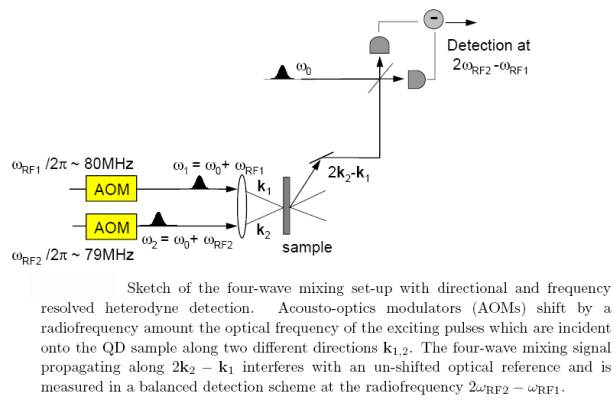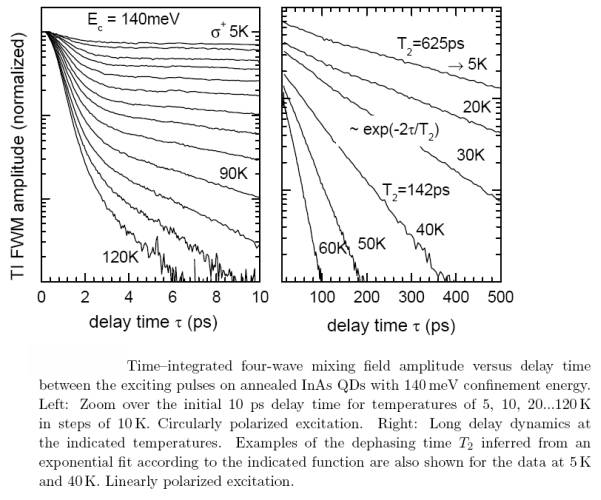Dephasing processes in InGaAs quantum dots
Coherent light-matter interaction in semiconductor quantum dots (QDs)
is receiving increasing attention due to possible solid-state
implementations in the emerging field of quantum information
processing. Beside its fundamental interest, the knowledge of the
dephasing time, inversely proportional to the homogeneous broadening,
of an excitonic transition in a QD is of crucial importance for these
applications. The dephasing time sets the time scale during which the
coherence of the excitonic transition is preserved and therefore
operations based on coherent-light matter interaction can occur.
Moreover, it is strictly related to intrinsic mechanisms such as
radiative processes, carrier-phonon scattering and carrier-carrier
scattering. Its study is a direct probe of those carrier dynamics which
ultimately are limiting the high-speed performances of QD-based
lasers/amplifiers.
Among the physical mechanisms responsible for the dephasing of the
excitonic polarization QDs, the interaction of excitons with phonons is
a topic intensively discussed in the literature. Using a sensitive
four-wave mixing technique in heterodyne detection we measured a
non-exponential decay of the optically-driven polarization in
epitaxially-grown InGaAs/GaAs QDs at low temperatures, consisting of a
fast initial decay over a few picoseconds followed by a long
exponential decay over several hundreds picoseconds eventually limited
by the radiative lifetime in the few nanosecond range [1]. The
corresponding non-Lorentzian homogeneous lineshape in spectral domain
has stimulated a number of theoretical works and is interpreted
in terms of a narrow zero-phonon line superimposed to a broad band from
exciton-acoustic phonon interactions due to the local character of the
electronic excitations in QDs giving rise to a local lattice distortion
[2]. A clear understanding of the physical processes governing this
unusual dephasing is of fundamental interest and of key importance to
predict and control the decoherence for applications of QDs in quantum
computing.
[1] P. Borri et al. “Ultralong dephasing time in InGaAs Quantum Dots”,
Phys. Rev. Lett. 87, 157401
(2001).
[2] P. Borri et al. ”Exciton dephasing via phonon interactions in InAs
quantum dots: Dependence on quantum confinement” Physical Rev. B 71, 115328 (2005)



